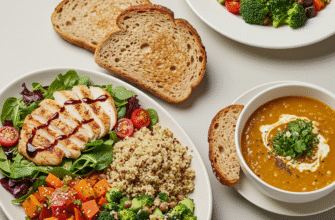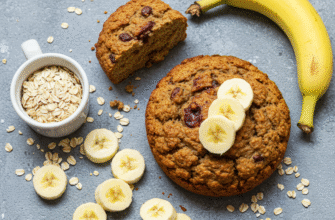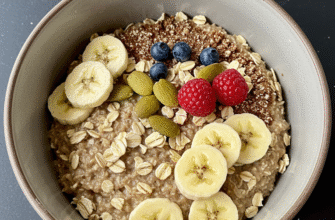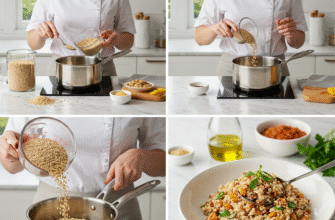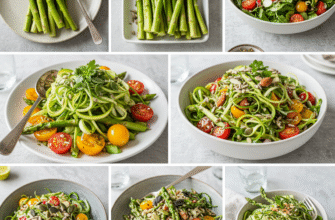Let’s talk about a kitchen superpower: transforming humble vegetables into deeply flavorful, caramelized, utterly craveable bites. Forget sad, steamed sides. We’re diving into the magic of roasting, a technique so simple yet so effective, it feels like cheating. Done right, roasted vegetables are crispy on the outside, tender on the inside, and packed with a concentrated sweetness you won’t believe came from the same raw ingredient. This guide is your path to achieving that perfect roast, every single time.
Why Roasting Reigns Supreme
What makes roasting so special? It’s all about high, dry heat. Unlike boiling or steaming which adds moisture, roasting allows the natural sugars within the vegetables to caramelize. Think of that beautiful browning – that’s flavour developing right there. Simultaneously, the Maillard reaction works its magic, creating hundreds of new aroma and flavour compounds. This combination results in vegetables that are not just cooked, but profoundly enhanced, with nutty, sweet, and savory notes emerging that simply don’t happen with other methods. Plus, it’s wonderfully hands-off for most of the cooking time!
Choosing Your Vegetable Champions
While you *can* technically roast almost any vegetable, some are definite all-stars. Here’s a breakdown:
Root Vegetables
These are classics for a reason. Their dense structure holds up beautifully to the heat, becoming tender and sweet.
- Carrots (especially colourful varieties!)
- Potatoes (Yukon Gold, red potatoes, fingerlings – cut bigger than you think!)
- Sweet Potatoes and Yams
- Parsnips
- Beets (earthy and sweet – roast them wrapped in foil first, then peel and chop for a final crisp)
- Turnips and Rutabagas
- Celery Root (Celeriac)
Cruciferous Contenders
These guys get wonderfully crispy edges and develop a lovely nutty flavour, losing any bitterness.
- Broccoli (those florets get so crispy!)
- Cauliflower (amazing flavour transformation)
- Brussels Sprouts (halved or quartered, leaves get chip-like)
- Cabbage (cut into wedges, it becomes surprisingly sweet)
- Kale (watch closely, it crisps fast into chips!)
Other Great Options
- Onions (wedges or thick slices, they become jammy)
- Garlic (whole cloves turn sweet and spreadable)
- Bell Peppers (all colours, sweeten beautifully)
- Zucchini and Summer Squash (can get soft, cut thicker or add later)
- Asparagus (roasts quickly, wonderful flavour)
- Mushrooms (get meaty and intensely flavoured)
- Tomatoes (cherry tomatoes burst with sweetness, larger ones become concentrated)
- Fennel (develops a lovely anise sweetness)
Feel free to mix and match! Just remember to group vegetables with similar cooking times together or add quicker-cooking ones partway through.
The Crucial Prep Work: Don’t Skip These Steps!
Perfect roasting starts before the vegetables even hit the oven. Nailing the prep is arguably the most important part.
Wash and THOROUGHLY Dry
This cannot be stressed enough. Water creates steam, and steam is the enemy of crispiness. After washing your veggies, pat them completely dry with paper towels or a clean kitchen towel. Let them air dry for a few minutes if you have time.
Seriously, get them dry!
Cut your vegetables into roughly uniform pieces. This ensures they all cook at roughly the same rate. If you have tiny broccoli florets next to huge potato chunks, the broccoli will burn before the potatoes are tender. Aim for bite-sized pieces, generally around 1 to 1.5 inches. Smaller pieces cook faster, larger pieces take longer. Consider the density too – dense roots need slightly smaller cuts than lighter veggies like peppers if roasting together.
Oil: The Flavour and Crisp Conductor
Fat is essential for roasting. It helps conduct heat, prevents sticking, encourages browning, and adds flavour. Choose an oil with a relatively high smoke point, as we’ll be using high heat.
- Good choices: Avocado oil, grapeseed oil, canola oil, sunflower oil, light olive oil, or even coconut oil (will impart slight flavour).
- Extra Virgin Olive Oil? It has a lower smoke point and can sometimes burn or taste bitter at high roasting temperatures (above 400°F/200°C). It’s often better used for drizzling *after* roasting or for lower-temp roasts.
How much oil? You want enough to lightly and evenly coat every piece, but not so much that the vegetables are swimming. A tablespoon or two per baking sheet of vegetables is usually about right. Drizzle the oil over the prepped veggies in a large bowl (not directly on the pan) and toss well with your hands or tongs to ensure even coating.
Seasoning: Simple is Often Best (at first)
At a minimum, you need salt and black pepper. Season generously in the bowl *after* oiling and *before* spreading on the pan. Tossing ensures the seasoning sticks.
- Salt: Use kosher salt or coarse sea salt for better flavour and texture than table salt.
- Pepper: Freshly ground black pepper offers infinitely more flavour.
- Dried Herbs: Hardy dried herbs like rosemary, thyme, oregano, or sage can be added before roasting. They hold up well to the heat.
- Spices: Garlic powder, onion powder, paprika (sweet or smoked), chili powder, cumin, or coriander add lovely depth. Add them with the salt and pepper.
- Fresh Herbs: Delicate fresh herbs like parsley, cilantro, dill, or basil are best added *after* roasting, as they’ll burn in the high heat.
The Roasting Ritual: Heat, Space, and Time
Okay, your veggies are prepped. Time for the main event.
High Heat is Your Friend
Forget low and slow. For truly great roasted vegetables with crispy edges and tender centers, you need high heat. Aim for a temperature between
400°F and 425°F (200°C to 220°C). Preheating your oven fully is crucial. Don’t put the veggies in a cold or partially heated oven.
Give Them Space: The Golden Rule
Overcrowding the pan is the number one killer of crispy roasted vegetables. When vegetables are packed too tightly, they trap moisture and steam each other instead of roasting. Use a large, heavy-duty rimmed baking sheet (or two!). Spread the oiled and seasoned vegetables in a
single layer, ensuring there’s a bit of space between the pieces. If your pan looks crowded, use a second pan.
Verified Tip: Don’t Crowd the Pan! This is the most critical factor for achieving crispiness. Vegetables release moisture as they cook. If they’re too close together, that moisture turns to steam, effectively steaming your veggies instead of roasting them. Ensure a single layer with space for air circulation. Use multiple pans if necessary.
Oven Position and Turning
Generally, the middle rack provides the most even heat. Check your vegetables about halfway through the estimated cooking time. Use a spatula to flip or toss them. This promotes even browning and cooking. If using two pans, rotate their positions (top to bottom, front to back) halfway through.
Knowing When They’re Done
Perfectly roasted vegetables should be easily pierced with a fork (tender) and have visible browning and caramelization, especially around the edges. Some edges might even look quite dark – that’s concentrated flavour! Taste one (carefully!) to check for both tenderness and flavour development. Cooking times vary widely based on the vegetable type, size of the pieces, and your specific oven.
General Roasting Time Guidelines (at 400-425°F / 200-220°C)
These are estimates – always rely on look and feel!
- Quick Roasting (15-25 minutes): Asparagus, Bell Peppers, Zucchini/Summer Squash, Green Beans, Mushrooms, Cherry Tomatoes, Kale (watch closely!).
- Medium Roasting (25-40 minutes): Broccoli, Cauliflower, Brussels Sprouts, Onions, Fennel, Cabbage Wedges, Smaller Potato/Sweet Potato cubes.
- Longer Roasting (40-60+ minutes): Larger chunks of Potatoes, Sweet Potatoes, Carrots, Parsnips, Beets, Butternut Squash, Turnips, Rutabaga.
Troubleshooting Common Roasting Woes
Even seasoned cooks hit snags. Here’s how to fix common issues:
- Problem: Soggy Vegetables.
- Cause: Oven temp too low, pan overcrowded, veggies weren’t dried properly, too much oil.
- Fix: Increase oven temp, use a larger pan or multiple pans, ensure veggies are bone dry next time, use slightly less oil.
- Problem: Burnt Exterior, Raw Interior.
- Cause: Oven temp too high, pieces cut too large (for that temp), oven has hot spots.
- Fix: Lower oven temp slightly (to 400°F/200°C), cut pieces smaller/more uniformly, rotate pan halfway through.
- Problem: Uneven Cooking.
- Cause: Pieces cut unevenly, pan overcrowded, didn’t toss/flip during cooking.
- Fix: Focus on uniform cuts, give veggies space, remember to toss them halfway through.
Level Up Your Roasted Veggies
Mastered the basics? Time to get creative!
- Finishing Touches: After they come out of the oven, toss with fresh lemon juice or zest, a drizzle of balsamic glaze or good vinegar, a sprinkle of fresh herbs (parsley, chives, dill), or crumbled feta or grated Parmesan cheese.
- Sweet & Savory: Add a tiny drizzle of maple syrup or honey during the last 10 minutes of roasting for extra caramelization (watch carefully as sugars burn quickly).
- Nutty Crunch: Toss in some nuts (walnuts, pecans, almonds) or seeds (pumpkin, sunflower) during the last 5-10 minutes.
- Spice Blends: Experiment with pre-made spice blends like Italian seasoning, za’atar, curry powder, or Herbes de Provence during the initial seasoning step.
- Umami Boost: A splash of soy sauce or tamari (use slightly less salt initially) or a sprinkle of nutritional yeast can add savory depth.
Roasting vegetables isn’t just a cooking method; it’s a revelation. It unlocks incredible flavour with minimal effort. By understanding the key principles – high heat, proper prep, and giving them space – you can move beyond basic sides and create show-stopping vegetable dishes. So grab your biggest baking sheet, preheat that oven, and get ready to fall in love with roasted vegetables all over again. Happy roasting!



